Japanese culture is based on respect and tradition. Almost every aspect of Japanese life is highly-structured with strict rules of etiquette that natives and visitors alike are expected to follow. This covers everything from business meetings and legal documents to social behaviour and drinking tea. Even eating out at your favourite sushi restaurant requires you to follow the proper etiquette to avoid giving offence.
In this article, we look at some of the common etiquette rules that Japanese citizens follow when dining at a sushi restaurant. While some of these are less important when at a sushi restaurant in the UK or the United States, they are a good guide to polite behaviour at the table.

Hot towel
Before your meal, you may be offered an oshibori – a hot, wet towel. This is used to clean your hands, prior to eating, and should be folded neatly and either returned to your host or replaced to the small tray it was brought to your table on. During hot summer months, the traditional hot towel is replaced with a cool towel for your comfort.

Chopsticks
Don’t rub your chopsticks together when you first receive them. This is common in films and other Western media, but it implies that you believe the chopsticks to be of low quality and require rubbing to remove unwanted splinters.
When you’re not using them, chopsticks should be laid parallel to one another, resting on a special holder, or on your shoyu (soy sauce) dish.
 Condiments
Condiments
Speaking of your shoyu dish, don’t put wasabi directly onto the dish. Your sushi chef will have applied the right amount of wasabi to your nigiri sushi to balance the flavours perfectly. If you like a fierier taste experience, you can add wasabi direct to the sushi, but not mixed in with your soy sauce.
Sushi is often served with pickled ginger, but this should not be used as a condiment or added to the sushi itself. It is there as a palate cleanser, to be eaten between different types of sushi.
When dipping nigiri in your soy sauce, always dip fish-side down. Sushi rice is very absorbent and will soak up a lot of soy sauce, overpowering the delicate flavour of the sushi.
 Eating and sharing
Eating and sharing
It is perfectly okay to eat nigiri using your fingers. Maki (sushi rolls) can be eaten using chopsticks, or with fingers, depending on your preference. Sashimi, on the other hand, should only ever be eaten with chopsticks.
When picking up a piece of food from someone else’s plate or a shared platter, use the wide end of the chopsticks – that is, the end that hasn’t been in your mouth.
Maki and nigiri style sushi should be eaten in a single bite to get all the flavours of its component parts at once. Many Western sushi restaurants produce larger nigiri than their Japanese counterparts, so this is not always possible!
 Soup
Soup
It is considered impolite to ask for a soup spoon if one is not provided for you. The traditional approach is to lift the bowl to your lips, using your chopsticks to manoeuvre any solid ingredients towards your mouth.
If you follow these rules, you can be certain not to cause offence in any traditional Japanese restaurant. If you want to practice at home, you can get all your ingredients and equipment direct from SushiSushi. Visit our online store today with fast delivery across the UK.
Shop Products



